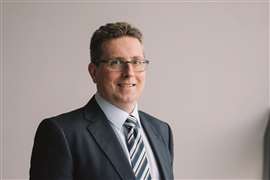Trendlines: 2023 proves a surprising year
23 January 2024
Construction markets in 2023 were better than expected. Why was this and what’s in store for 2024?
Since mid-2020, the construction sector has seen several waves of surging activity – first, in residential building, then in nonresidential and more recently infrastructure has joined the party.
 Monthly value of construction put in place (US$ millions). Source: US Census Bureau
Monthly value of construction put in place (US$ millions). Source: US Census Bureau
Homebuilding benefited from the low interest rates and extra money in private individuals’ hands from job protection schemes that hit the market in 2020 at the start of the pandemic. Higher interest rates slowed activity in 2023, but the market was still at a high level.
Then in 2022, nonresidential building started to pick up and went on to positively spike last year. This sector is comprised of a number of different categories of structures, including office, commercial, factories, lodging and so on. Many have similar drivers, so the nonresidential sector often tends to move as one big mass.
Manufacturing and infrastructure
Not so in the last two years when the CHIPS Act provided remarkable impetus for the construction of manufacturing facilities. In 2017-2021, this market was worth $66-78 billion per year, according to U.S. Census Bureau data. However, in 2022, it shot up to $106 billion and the final total for 2023 is likely to be in the $150-180 billion Dollar range. The vast majority of the increase is attributable to the hitherto relatively modest segment of building manufacturing plants for the production of electrical and electronic goods and components.
More recently, the impact of the IRA has been felt more in the infrastructure segment than in nonresidential building. The total value of this segment moved up a modest 4% in 2022 to $374 billion, but the figure for 2023 will be comfortably in excess of $400 billion. Highway and street construction is the main driver here, but there has also been a useful surge in construction of communication networks – a type of infrastructure that is included in the very broad definition of the term in the IRA.
2024 Outlook
 Chris Sleight, managing director of Off-Highway Research
Chris Sleight, managing director of Off-Highway Research
It is unlikely that such steep rates of growth will continue. Construction backlogs are finally starting to fall, and the various confidence indicators and measures of expectations are pointing more clearly toward small increases in work and staffing levels, rather than the big increases which were forecast a year ago (and which came to pass).
However, even with a cooling in the market, the amount of construction activity in North America will remain at historically high levels. A positive of this is that inflation in materials prices and labor costs should moderate.
This should all help keep the construction equipment market at very good levels in 2024. Unit sales might be lower because the slowdown in residential will affect demand for high-volume compact equipment. However, the pivot toward infrastructure and larger-scale nonresidential building means fewer, larger machines, which is helpful for both the value of the sector and the margins of those who sell them.
Off-Highway Research is a market research and forecasting business specializing in analysis of the global construction and agricultural equipment markets. Learn more at: www.offhighwayresearch.com




